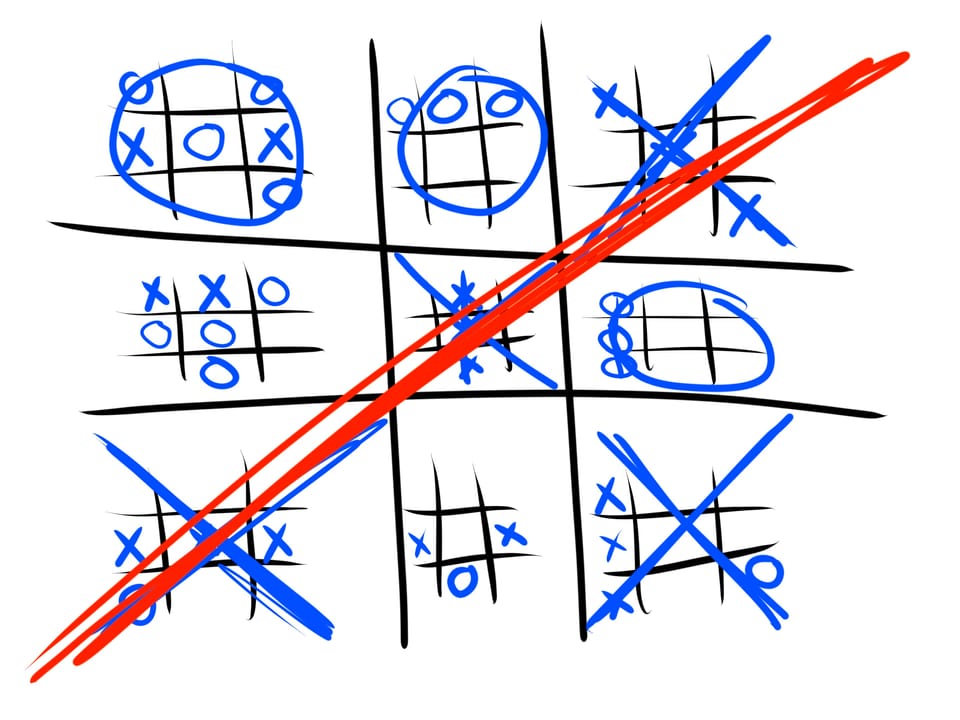Week 33: Ultimate Tic-Tac-Toe


Games don’t have to be complicated to require some good thinking skills. We all learn tic-tac-toe when we are younger. We soon learn how to always come to a stalemate with an equal opponent. Once you get the strategy, it can get a little boring… But what if we add a layer (or two) of moves. What does this do to the strategy of the game? Is it so easy to predict your opponents next move?
This week I recommend learners create a tic-tac-toe board that has tic-tac-toe boards in each square. Here is a video of how to play:
My learners contemplated:
- How many times can you nest the game before it’s too complex?
- With each layer added, how much longer and more difficult would it be? (how many moves are there?)
- How is this like a fractal?
- Could you keep a game going with one move a day for how many days with 2-nested?, 3-nested, 4?
- What does the game tree look like?
- How many ways can you play tic-tac-toe vs ultimate tic-tac-toe?(think combinations). What is the combinatorics calculation look like for this?
If you are wondering how I was able to do this in the time of Covid… I use a digital white board and label squares so it is easy to say the next move. You can also use a shared google drawing or a google spreadsheet to play (here is one for you.)
Another blog (Games for Young Minds) that does a great post on this game is here. Math with Bad Drawings also has a great post here. As you can see, this is a fun game with us mathy folks everywhere.
